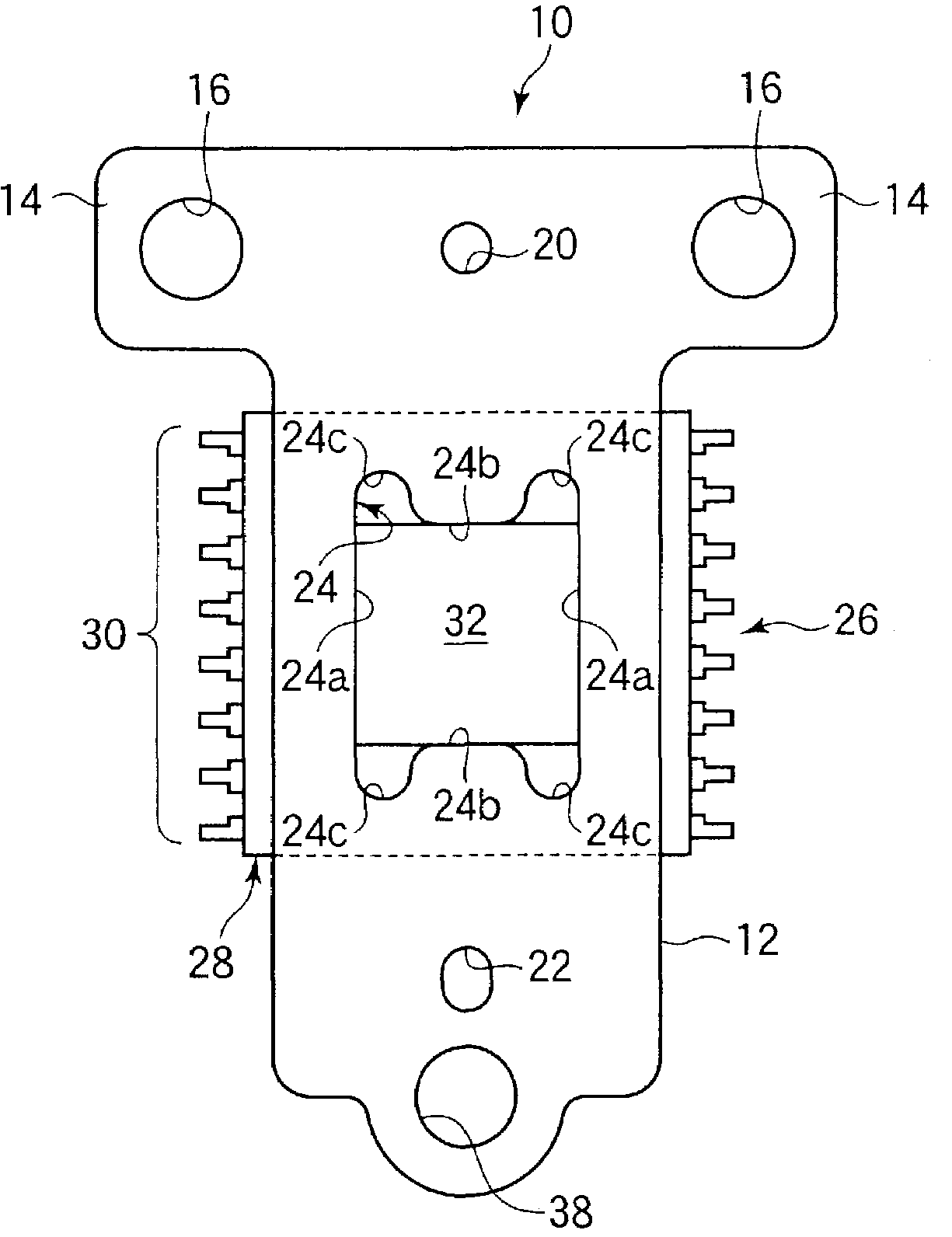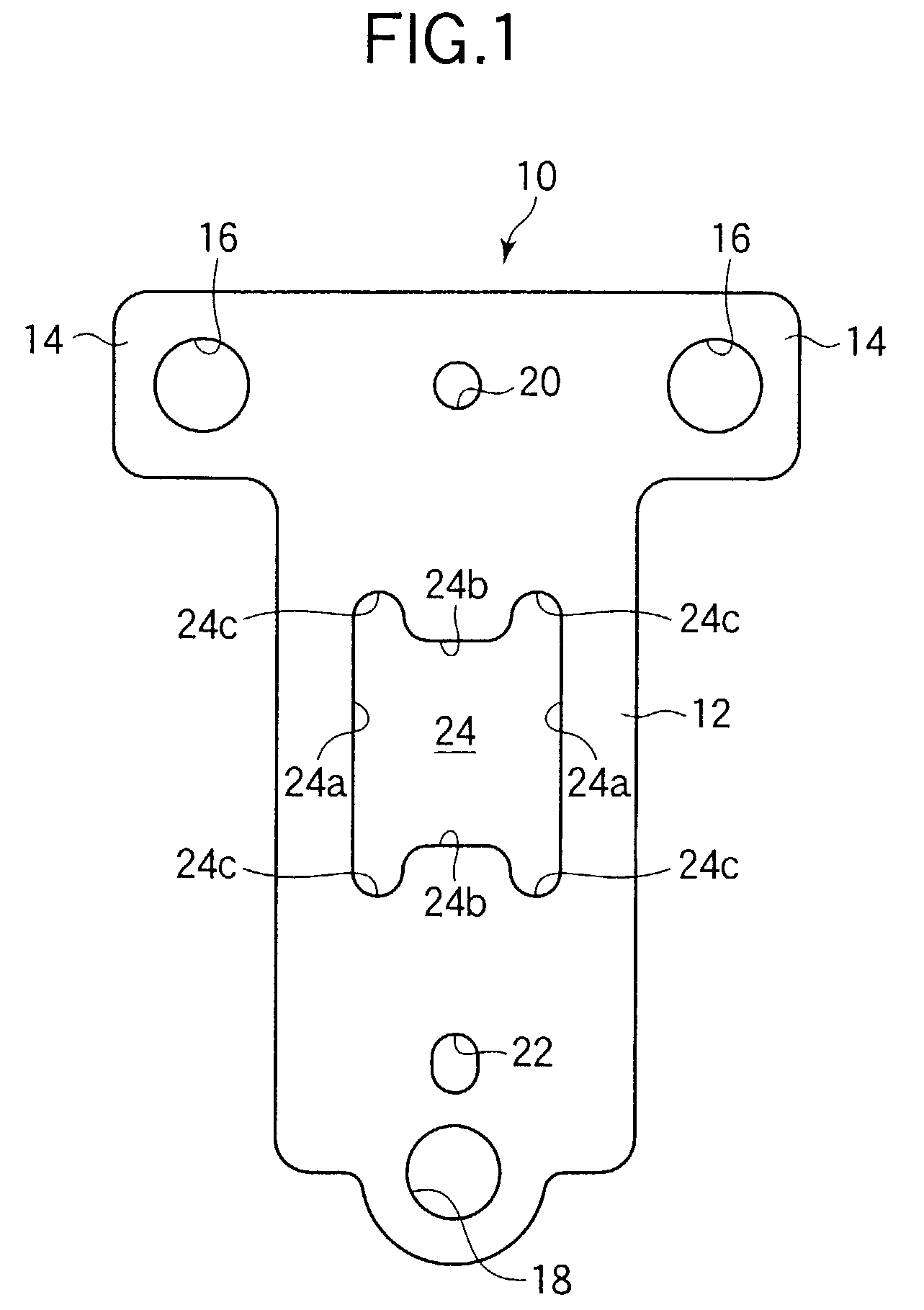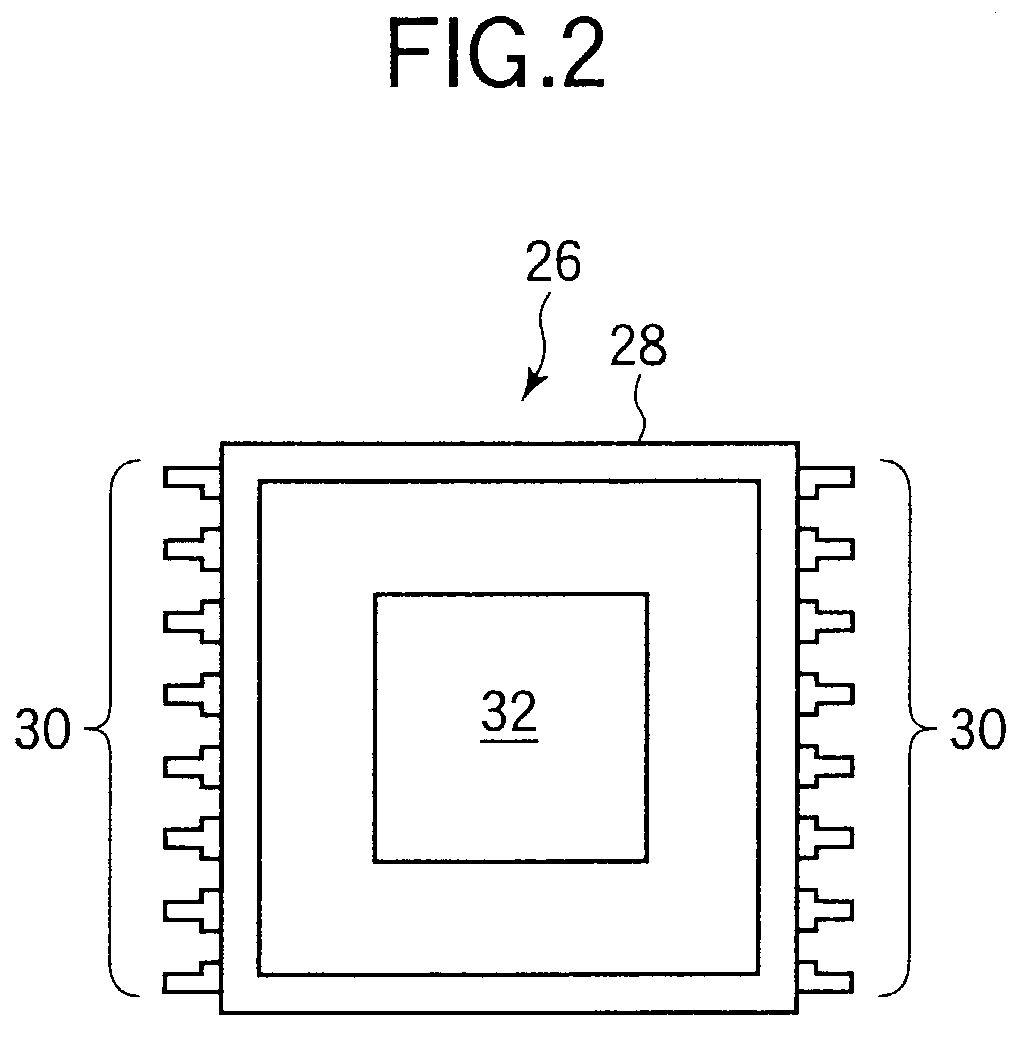Mounting plate for solid-state imaging device and method for bonding solid-state imaging device to mounting plate
- Summary
- Abstract
- Description
- Claims
- Application Information
AI Technical Summary
Benefits of technology
Problems solved by technology
Method used
Image
Examples
Embodiment Construction
[0028]The present invention will be described below with reference to the embodiments shown in the drawings.
[0029]FIG. 1 shows a plan view of a mounting plate 10 of an embodiment of the present invention. The mounting plate 10 has a rectangular portion 12 and a pair of expanded portions 14 which are provided on an end portion of the rectangular portion 12 and project outward in opposite directions. Namely, the mounting plate 10 has approximately a T-shape as a whole, and can be punched out of a metal plate such as aluminum with a high accuracy.
[0030]A pair of through holes 16 are formed in the expanded portions 14, and a through hole 18 is formed in another end portion of the rectangular portion 12. These through holes 16 and 18 are arranged in such a manner that the centers of the holes 16 and 18 coincide with the vertexes of an isosceles triangle. On the other hand, on an attaching portion of an inner frame housed inside a digital camera or video camera, three screw holes are form...
PUM
 Login to View More
Login to View More Abstract
Description
Claims
Application Information
 Login to View More
Login to View More - R&D
- Intellectual Property
- Life Sciences
- Materials
- Tech Scout
- Unparalleled Data Quality
- Higher Quality Content
- 60% Fewer Hallucinations
Browse by: Latest US Patents, China's latest patents, Technical Efficacy Thesaurus, Application Domain, Technology Topic, Popular Technical Reports.
© 2025 PatSnap. All rights reserved.Legal|Privacy policy|Modern Slavery Act Transparency Statement|Sitemap|About US| Contact US: help@patsnap.com



